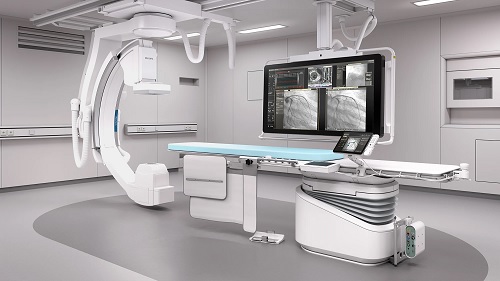Medical imaging plays a vital role in the diagnosis and treatment of various diseases and conditions. Among the many imaging modalities available, X-ray imaging continues to be one of the most widely used and reliable techniques. It enables healthcare professionals to visualize the internal structures of the body, aiding in the identification of injuries, diseases, and abnormalities. With advancements in technology and increasing demand for accurate and efficient diagnostic tools, the global medical X-ray market is set to experience significant growth in the coming years. According to a report by Growth Plus Reports, the medical X-ray market is projected to grow at a compound annual growth rate (CAGR) of 6% by 2030.

In this article, we will explore the growth prospects of the medical X-ray market and delve into the various factors driving its expansion. We will also discuss the advancements in X-ray technology, its applications in healthcare, market segmentation, regional analysis, competitive landscape, and future outlook.
Overview of the Medical X-ray Market
The medical X-ray market refers to the market for X-ray imaging systems and related accessories used in the healthcare industry. X-ray imaging is a non-invasive procedure that involves exposing the body to a small amount of radiation to produce images of internal structures. These images help healthcare professionals diagnose and monitor a wide range of medical conditions, including bone fractures, tumors, lung infections, and dental issues.
Factors Driving the Growth of the Medical X-ray Market
The medical X-ray market is poised for significant growth due to several key factors. Firstly, the increasing prevalence of chronic diseases such as cancer, cardiovascular disorders, and respiratory diseases is driving the demand for advanced diagnostic tools like X-ray imaging. Additionally, the rising geriatric population, which is more susceptible to age-related ailments, is fueling the need for accurate and efficient diagnostic techniques.
Furthermore, technological advancements in X-ray imaging systems are contributing to market growth. The development of digital X-ray systems, computed tomography (CT) scanners, and portable X-ray devices have revolutionized the field, enabling faster image acquisition, higher resolution, and improved patient comfort. These advancements have led to enhanced diagnostic accuracy and streamlined workflows in healthcare facilities.
Advancements in X-ray Technology
The continuous advancements in X-ray technology have significantly improved the capabilities of medical X-ray systems. Digital radiography (DR) and computed radiography (CR) have replaced traditional film-based X-ray systems, offering numerous advantages such as lower radiation dose, faster image processing, and immediate availability of digital images for analysis. These digital systems have also facilitated the integration of X-ray imaging with picture archiving and communication systems (PACS), allowing easy storage, retrieval, and sharing of patient data.

Another noteworthy advancement is the introduction of cone-beam computed tomography (CBCT) technology, which provides three-dimensional imaging with a lower radiation dose compared to traditional CT scanners. CBCT has found applications in dental imaging, orthopedics, and interventional radiology, further expanding the scope of medical X-ray imaging.
Applications of Medical X-ray Imaging
Medical X-ray imaging finds applications in various medical specialties. It is commonly used in orthopedics to diagnose fractures, dislocations, and joint abnormalities. In radiology, X-ray imaging aids in the detection and monitoring of tumors, infections, and other pathological conditions. Dentistry relies heavily on dental X-rays for evaluating oral health and diagnosing dental diseases.
Moreover, medical X-ray imaging plays a crucial role in interventional procedures such as angiography, where X-ray guidance is used to navigate catheters and guide medical interventions. The versatility and wide range of applications make X-ray imaging an indispensable tool in modern healthcare.
Visit: Apple Tree Dental: Dentist Rexburg {2023}
Market Segmentation
The medical X-ray market can be segmented based on product type, technology, application, end-user, and geography. Product types include stationary X-ray systems, portable X-ray systems, and retrofit X-ray systems. Technologies encompass digital radiography, computed radiography, and fluoroscopy. Applications range from orthopedics and cardiology to dentistry and oncology. End-users consist of hospitals, diagnostic centers, and ambulatory surgical centers.

Geographically, the market is divided into North America, Europe, Asia Pacific, Latin America, and the Middle East and Africa. North America currently dominates the market due to the presence of advanced healthcare infrastructure, favorable reimbursement policies, and the adoption of cutting-edge imaging technologies. However, the Asia Pacific region is expected to witness substantial growth in the coming years, driven by increasing healthcare expenditure, a large patient pool, and improving access to healthcare services.
Regional Analysis
The regional analysis of the medical X-ray market reveals variations in market dynamics across different geographical regions. North America leads the market due to the high demand for advanced diagnostic tools and well-established healthcare systems. Europe follows closely, driven by technological advancements and a growing elderly population. The Asia Pacific region, with its large population and increasing healthcare investments, offers immense growth opportunities for market players. Latin America and the Middle East and Africa are also witnessing steady growth, supported by improving healthcare infrastructure and rising awareness about early disease diagnosis.
Competitive Landscape
The medical X-ray market is highly competitive, with several prominent players vying for market share. Companies are focusing on research and development activities to introduce innovative products and gain a competitive edge. Strategic collaborations, mergers, and acquisitions are also prevalent in the market, allowing companies to expand their product portfolios and geographical reach.
Key players in the medical X-ray market include Siemens Healthineers AG, GE Healthcare, Koninklijke Philips N.V., Canon Medical Systems Corporation, and Carestream Health, among others. These companies are investing in technology advancements, product launches, and strategic partnerships to strengthen their market position.
Challenges and Opportunities
Despite the positive growth prospects, the medical X-ray market faces certain challenges. One of the key concerns is the potential health risks associated with radiation exposure during X-ray imaging. Efforts are underway to minimize radiation dose without compromising image quality through dose optimization techniques and the use of low-dose protocols.
Another challenge is the high cost of advanced X-ray systems, which can limit their accessibility, especially in developing regions. However, ongoing research and development activities aim to develop cost-effective solutions to overcome this barrier.
On the other hand, the market presents several growth opportunities. The increasing demand for point-of-care imaging, the rising adoption of mobile X-ray devices, and the integration of artificial intelligence and machine learning algorithms in X-ray interpretation are some of the opportunities that players can capitalize on.
Future Outlook
The medical X-ray market is poised for significant growth in the coming years. Technological advancements, increasing healthcare expenditure, and the rising prevalence of chronic diseases will drive market expansion. The integration of artificial intelligence and machine learning algorithms in X-ray interpretation is expected to further enhance the diagnostic capabilities of medical X-ray imaging. Moreover, the growing demand for point-of-care imaging and the development of cost-effective solutions will contribute to market growth.
The Asia Pacific region, with its large population and improving healthcare infrastructure, is expected to emerge as a key market for medical X-ray systems. The region’s increasing healthcare investments and rising awareness about the importance of early disease diagnosis will drive market growth.
Conclusion
The medical X-ray market is set to grow at a CAGR of 6% by 2030, driven by factors such as advancements in X-ray technology, increasing prevalence of chronic diseases, and rising demand for accurate diagnostic tools. The market presents both challenges and opportunities, and players in the industry are focusing on innovation and strategic collaborations to stay competitive. With ongoing developments in technology and a growing emphasis on patient-centric care, medical X-ray imaging will continue to play a crucial role in improving healthcare outcomes.
FAQs
1. Are X-rays safe for patients?
Yes, X-rays are generally considered safe. However, the radiation dose is kept as low as possible to minimize any potential risks. Healthcare professionals take precautions to ensure that the benefits of X-ray imaging outweigh the risks, especially when it comes to diagnosing and monitoring medical conditions.
2. Can X-rays be used for detecting all types of medical conditions?
X-rays are effective in diagnosing a wide range of medical conditions, including fractures, tumors, infections, and dental issues. However, certain conditions may require additional imaging techniques or modalities for a more accurate diagnosis. Your healthcare provider will determine the most appropriate imaging method based on your specific situation.
3. How do advancements in X-ray technology benefit patients?
Advancements in X-ray technology have led to improved diagnostic accuracy, reduced radiation dose, faster image processing, and enhanced patient comfort. These advancements enable healthcare professionals to make more precise diagnoses, resulting in better treatment outcomes and improved patient care.
4. Can X-ray imaging be used during pregnancy?
X-ray imaging should be used with caution during pregnancy due to potential risks to the developing fetus. Whenever possible, alternative imaging methods that do not use ionizing radiation, such as ultrasound or magnetic resonance imaging (MRI), are preferred for pregnant women. However, in emergencies or when the benefits outweigh the risks, X-ray imaging may be performed under the guidance of a healthcare professional.
5. How can I access more information about medical X-ray systems?
For more detailed information about medical X-ray systems, their applications, and the latest advancements in the field, you can visit our website and explore the resources available. Additionally, consulting with a healthcare professional or radiologist will provide you with personalized information based on your specific needs and concerns.




